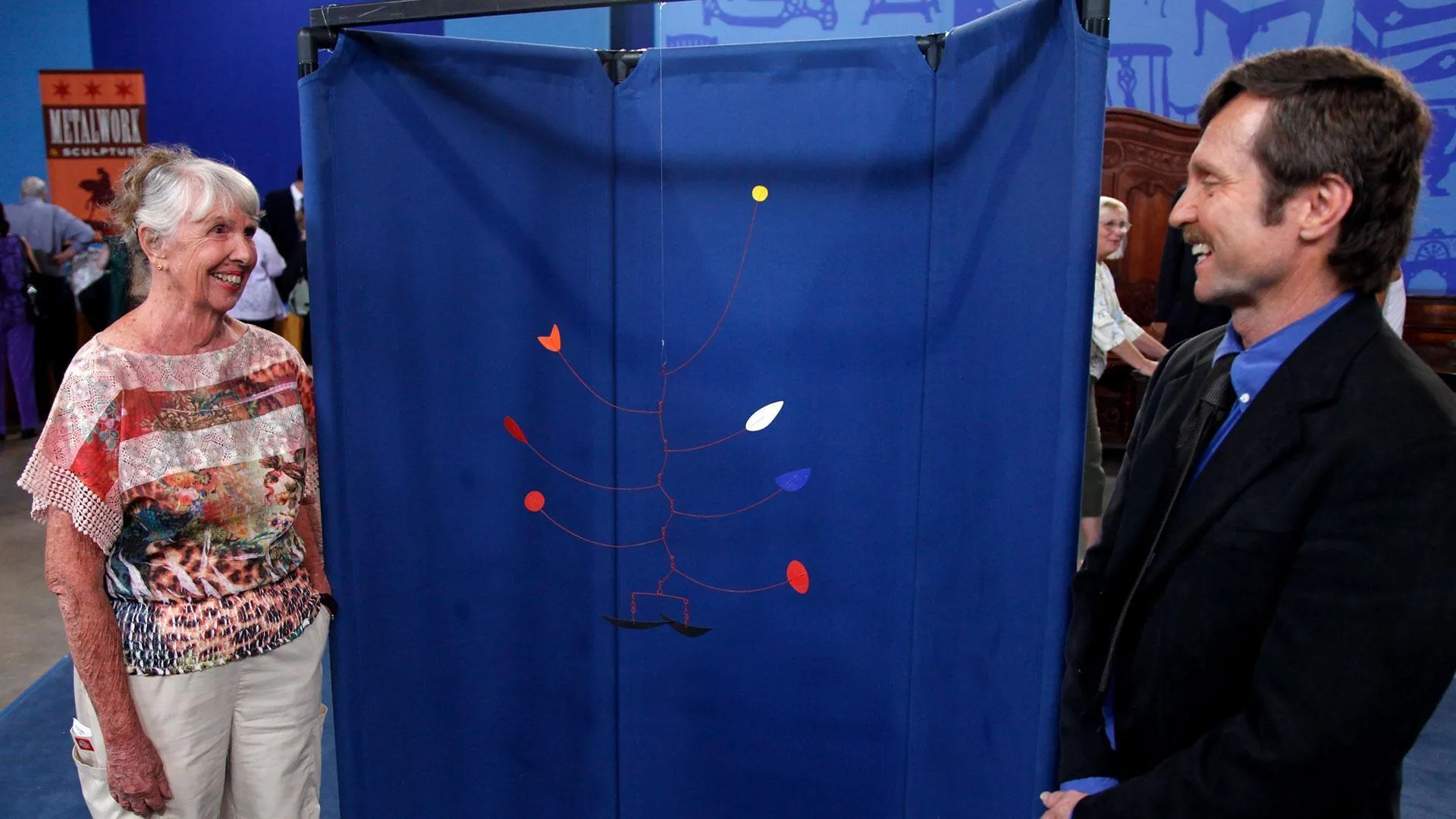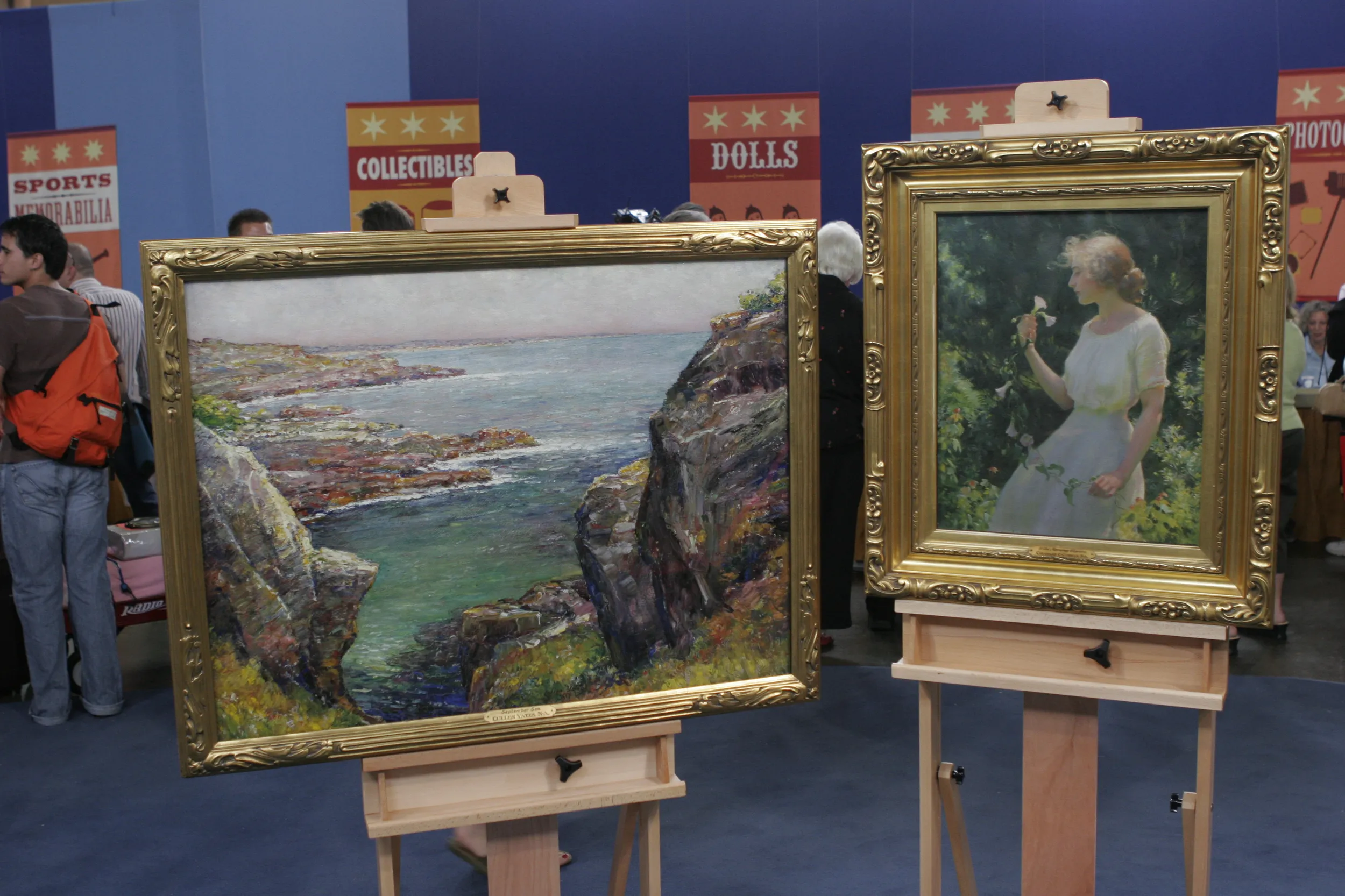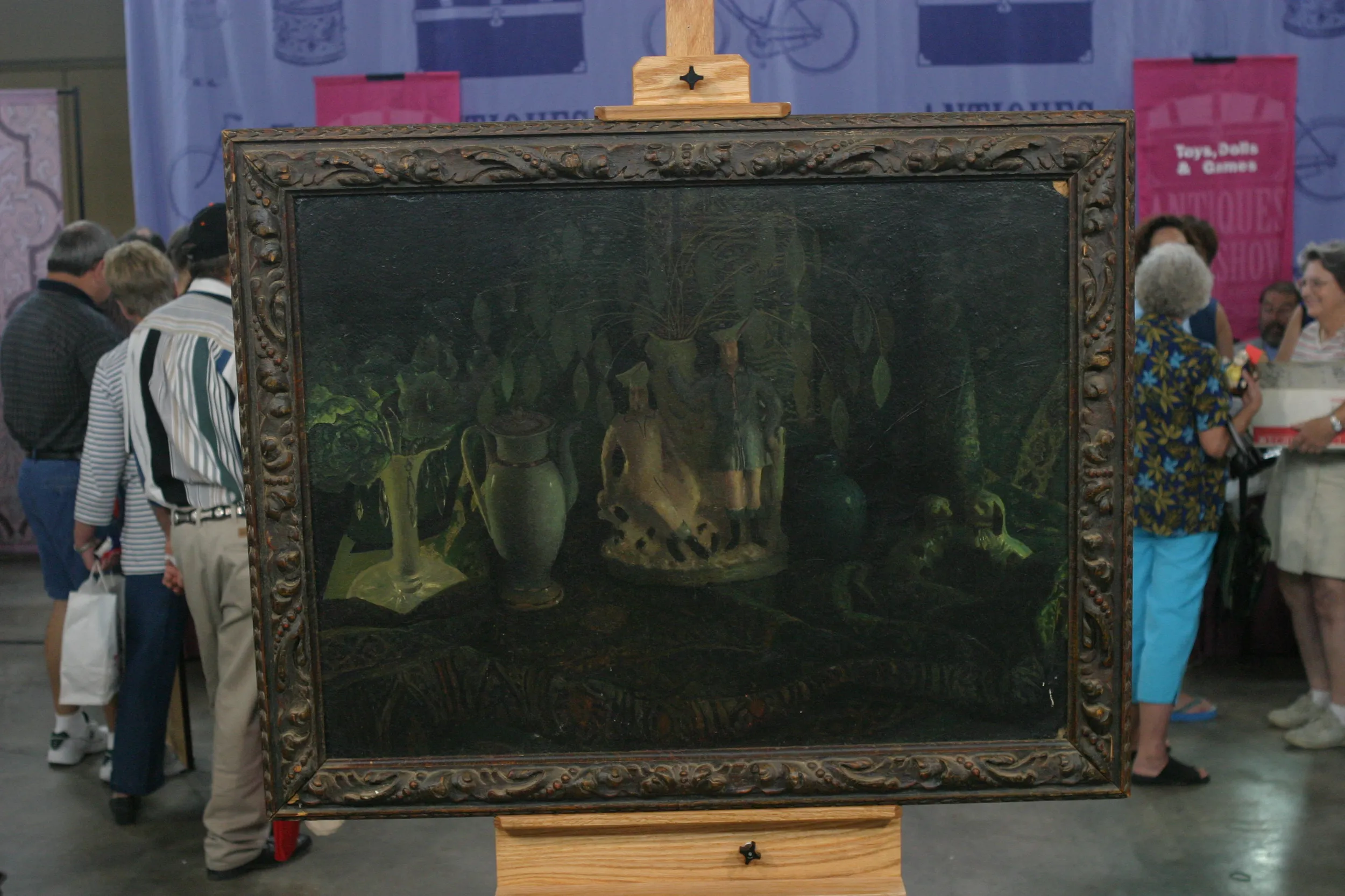WOMAN: This is a painting that I got in New York City. My husband collected a lot of art. He liked Albert Bierstadt. They were having an auction, so I went to the auction and bid on it-- the first time I've ever bid at auction, and I had a great time. But I hoped that I did the right thing.
APPRAISER: Uh-huh, well, of course Albert Bierstadt is one of the premier American artists. He was born in Germany in 1830 and then came to the United States. He did go back to Europe and painted in Switzerland as well as his native Germany. But once he went out West, he was just mesmerized by the landscape there. The work was probably painted around the middle of the 1870s. Bierstadt, although he painted strictly Western scenes and strictly American scenes, he also painted what we call composite scenes, meaning utilizing different terrains from Europe and the United States, all in one painting. So we were trying to figure out, is it Western, is it European, or is it both? And at the moment, we're feeling that it may be a combination of different areas of the world. For example, the mountain range here is quite magnificent, so it really reminds us more of the Alps.
GUEST: Mm-hmm.
APPRAISER: On the other hand, could it be the Rocky Mountains? And then there was some thought it might be the Grand Tetons. Well, it turns out that the Grand Tetons more or less stand alone, and you don't see the configurations that we're seeing here. So it's actually quite a mystery, and something I think that we certainly want to solve.
GUEST: Mm-hmm.
APPRAISER: And the painting may appear to be on canvas, because if you look at the back of it, there is canvas. But it is actually oil on paper...
GUEST: Oh...
APPRAISER: ...that's been glued down to canvas.
GUEST: Oh!
APPRAISER: And he did this routinely. So it's actually a good sign when we see that in his work in particular.
GUEST: Uh-huh.
APPRAISER: And of course it's covered by glass, which has protected it all these years, and so it actually isn't very dirty. The frame looks to be the original, and it too is in good shape, except for perhaps a little bit of residue here, where the liner has started to come apart, and that could be fixed very easily. Now, do you remember how much you paid for it?
GUEST: I think I paid around $8,000 for it, around 1985 or before.
APPRAISER: And that was a typical price for what something like this would have brought at that time. Well, if we say that it's a painting that is a composite of both Western and European elements, in today's market, if this were being sold in a gallery, the gallery would probably sell it for $50,000.
GUEST: Oh, really? I... I'll be... Really?
APPRAISER: Yes.
GUEST: I had no idea.
APPRAISER: He's really one of the hottest artists in the traditional American paintings market.
GUEST: Wonderful!
APPRAISER: Now, we really feel we ought to do a little more research on the scene.
GUEST: Yes, okay.
APPRAISER: Because if, for example, we could prove that it is strictly an American Western scene...
GUEST: Mm-hmm...
APPRAISER: ...then the value of this, again, in a gallery would be more in the range of $125,000.
GUEST: No! Not really! (laughing) Oh, wow!









